I have owned a Palm Kaikoura PFD for more years than I care to remember. I originally purchased the 2008 design, and given the amount of abuse it has sustained during my kayak fishing exploits over the years, it has lasted pretty well. I was going to write a tried and tested review, but then I thought it would be interesting to look at the new 2013 model and see what had changed. So here it is…
The Palm Kaikoura PFD is intended as a touring PFD, but as a kayak fisherman, the main reason I bought one, was because it had lots of pockets for storing my fishing items. it also had a great reputation for being a quality piece of kit, and given that it was going to be abused with saltwater, I wanted something which was going to last.
My 5 Year Old Kaikoura PFD
Some images of my 5 year old Kaikoura PFD…
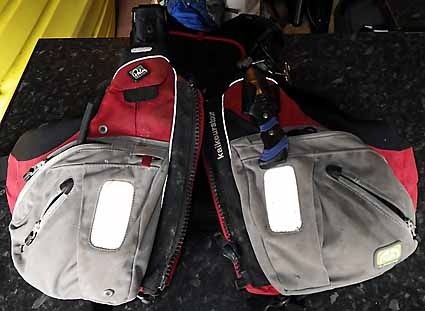
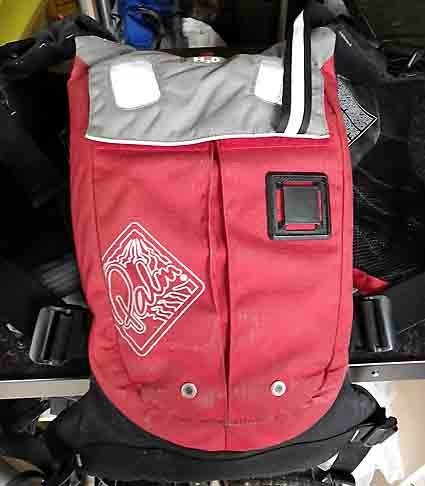
Ok, so the good things about the old PFD…
Fleece lined hand warmer pockets (nice and toasty for winter kayak fishing sessions)…
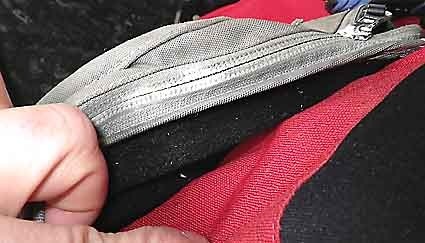
Lots of attachment points for rope cutters and other accessories…
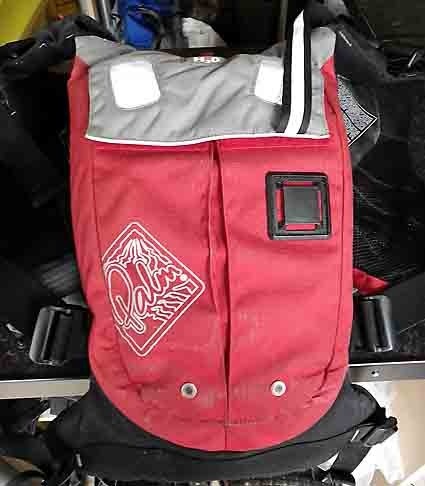
Lots of storage pockets (including one on the inside of the back mesh and two on the shoulder straps)…
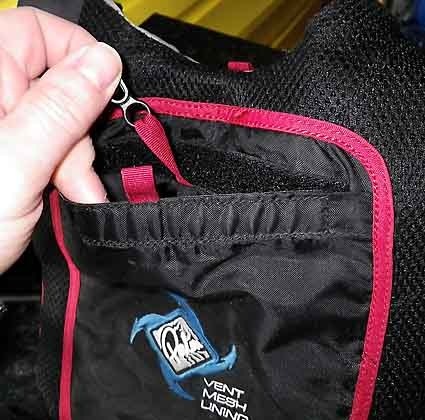
The safety whistle – a small detail, but something which could potentially save your life…
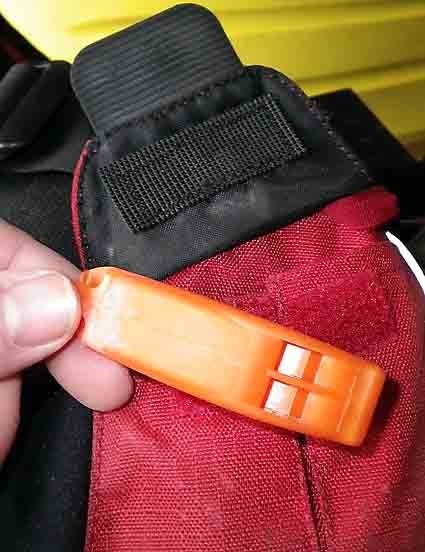
The things which after 4 years of abuse did not fare so well, or which were not such a great idea were…
The hole for the antenna of a portable VHF radio. This seemed like a good idea, but after a while, I realised that it made it awkward to take out/put back the radio…

The self draining metal holes (a good idea, but they ended up corroding)…
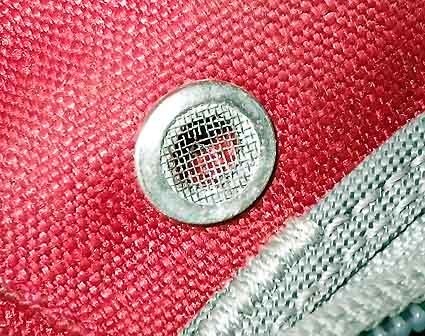
The zips – to be honest, they did ok, but after years of saltwater abuse, they started to seize…
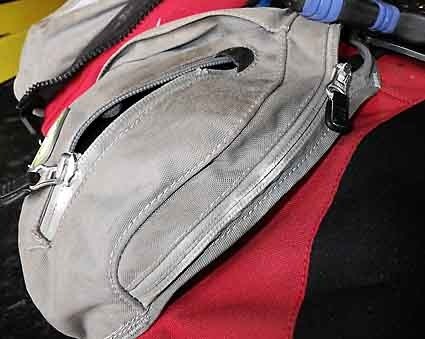
But what about the newer 2013 model ? Well, carry on reading and we will have a closer look at the detail of Palm’ newer re-incarnation of the Kaikoura, and see what improvements and additions have been made.
The 2013 Design Kaikoura PFD
Let’s have a look at some of the weaknesses of the old PFD, and see how the new design copes.
First up, the design of the pockets has changed, the hole for the portable VHF antenna has gone, and instead, a set of double zips. This is a definite improvement, its much easier to access and stow a portable VHF radio using the new PFD.
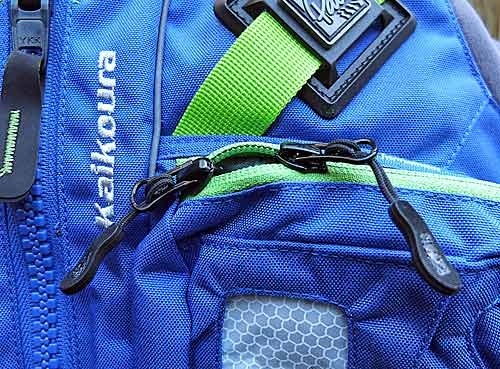
The self draining metal mesh holes have also been removed from the latest design – so no corrosion issues on that score.
As for the zips, it looks like they have been upgraded, so they should stand the test of time…
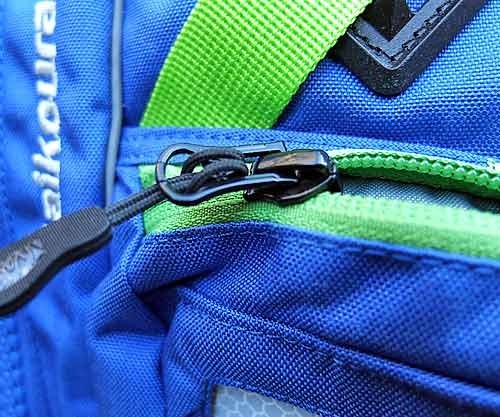
So it definitely seems like Palm have listened to user feedback, and updated the design of their latest PFD. But that’s not all; there are a number of other changes to the design. Let’s have a look at the 2013 Palm Kaikoura PFD in greater detail.
This is what the official advertising specification says…
A front zipped expedition level touring PFD packed with features and storage space. Flex Formed Foam technology gives unparalleled comfort and fit.Features include:
• YKK front zip entry
• Flex Formed Fit
• Bartacked shoulder straps with pulley adjustment
• Reflective details
• Safety whistle
• Leg strap compatible (optional)
• 3D anti ride-up waistbelt
• Easy Glide straps
• Large front pockets with internal compartments, clip-in points and two-way zippers for VHF radio aerial
• Fleece lined handwarmer pockets
• Large rear pocket
• Neoprene lined underarms for comfort
• Clip-in points and lash tabs
• Hydration Bladder compatible
Material: Cordura 500D, Vent Mesh liner
Colours: Red, Blue, Saffron
Code: BA326Certification: EN ISO 12402-5 / 12402-
6 Size options: XS/S (60 N), M/L (70 N), XL/XXL (70 N)
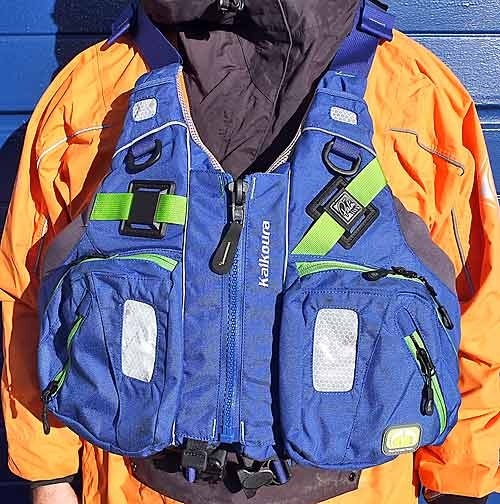
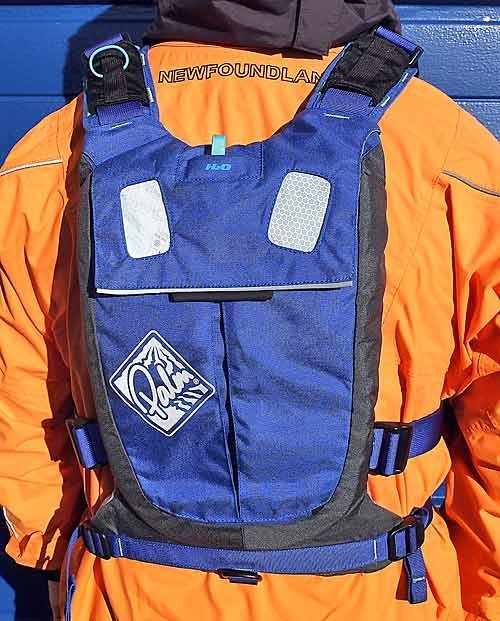
The Kaikoura looks good – it comes in a number of different colour schemes. I had the blue version, but the saffron one might appeal more if you were spending alot of time at sea.
Comfort
The PFD is still really comfortable, and adjustment is easy. The reason for the comfort is the way that the body of the PFD seems to fit around you.
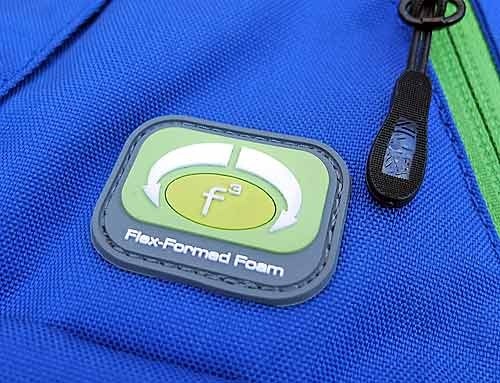
The top portion of the foam section under your arm is probably the area which gets brushed the most (during your paddle stroke). This area of the PFD is covered in a soft neoprene type material, which definitely feels good.
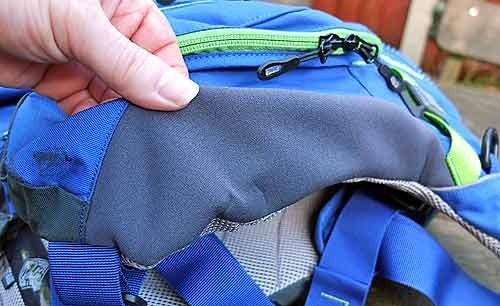
Adjustment
Changing the fit is easy; width adjustments can be made with one hand using the 2 straps on the side of the PFD…
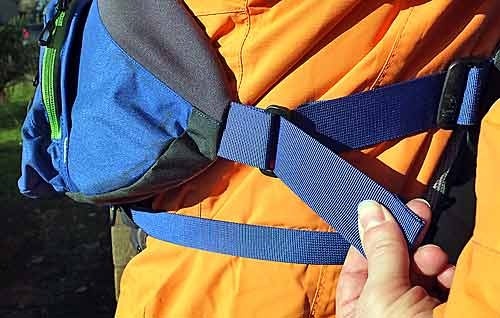
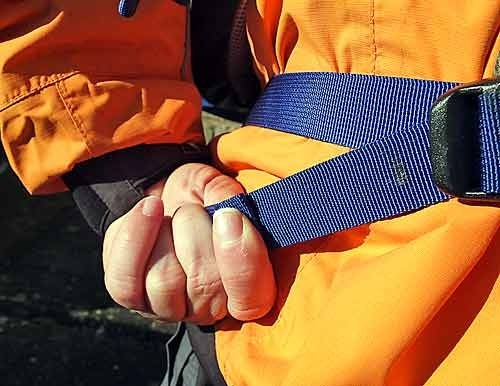
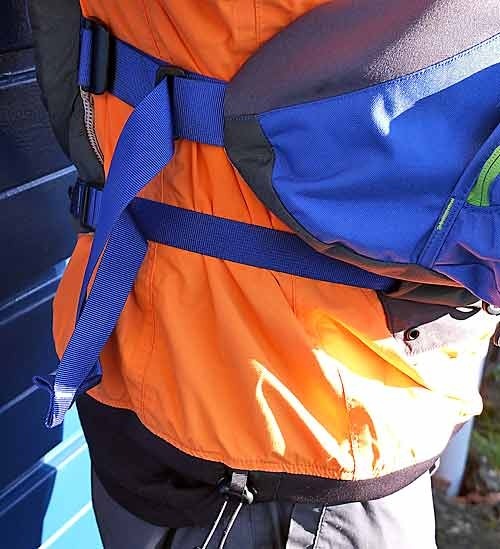
There is an adjustable nylon buckle at the bottom of the front of the PFD, which is strong and easy to get at.
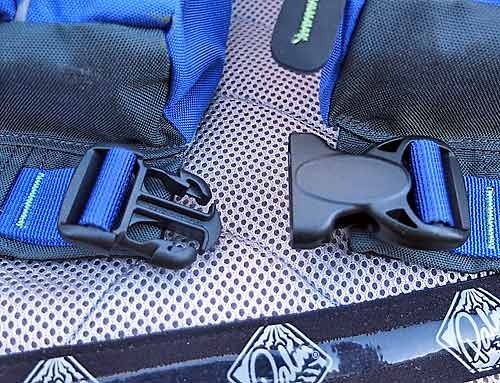
The ride height of the PFD is adjusted using the straps on each shoulder. Again, adjustment is a doddle…
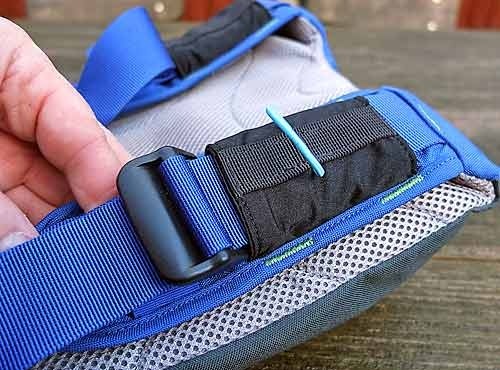
Pockets
The two small pockets on the shoulder straps have gone, as has the small sealed pocket inside the back section. But to be honest, the pocket on the inside of the back was of limited use anyway, so no big deal.
The double front pockets are easy to access, the two-way zip makes things easy.
The upper pockets are larger than the lower ones, and have a D-ring, a small clip (great for leashing your portable VHF radio) and a smaller mesh lined pocked inside secured by velcro.
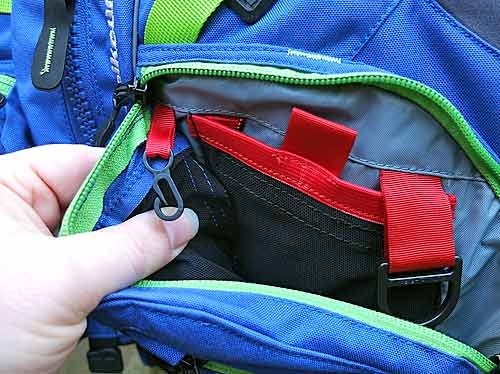

The safety whistle is still present, which is great to see…
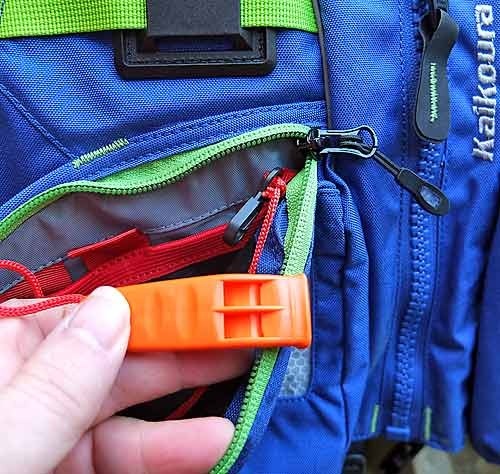
Just above the top pockets are the fleece lined pockets. There are great for sticking your hands inside, on those cold winter days when waiting for the fish to bite.

There are also two smaller zipped pockets below the double zipped ones. The two pockets are separated by a thin mesh which should allow water to drain and air to get in to dry them a bit quicker after use.
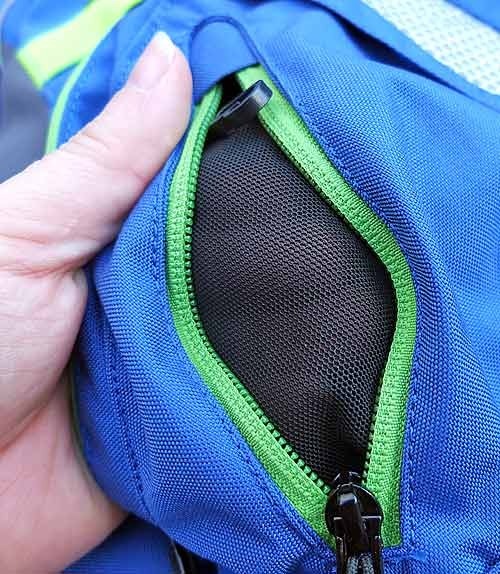
The rear of the PFD houses a large pocket which can be use for hydration bladders (in my old PFD, I used this pocket to store my flares).

The top of the pocket has an opening to allow the hytdration tube to pass through.
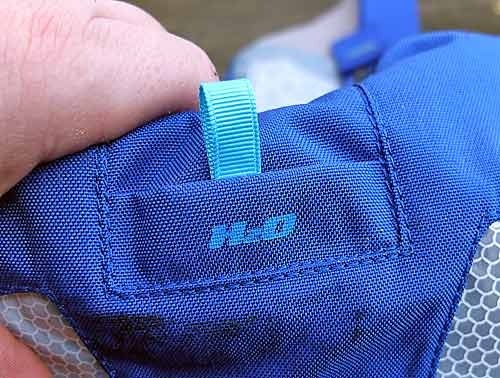
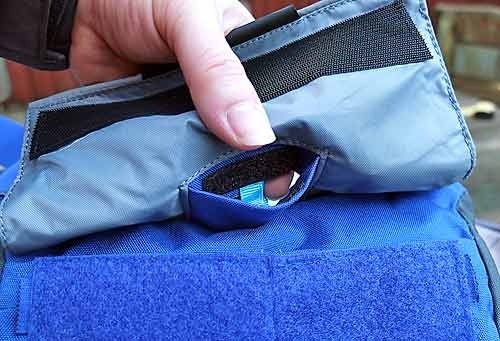
The rear pocket has the ability to expand to quite a large size, thanks to some elastic tabs.
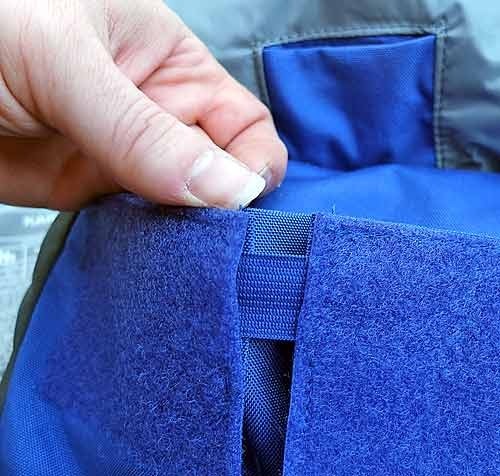

Anything inside is quite secure, as there is large area of velcro sealing the access flap to the rear pocket (if I am being a bit picky, then there is probably a bit too much velcro for my liking – but each to his own).
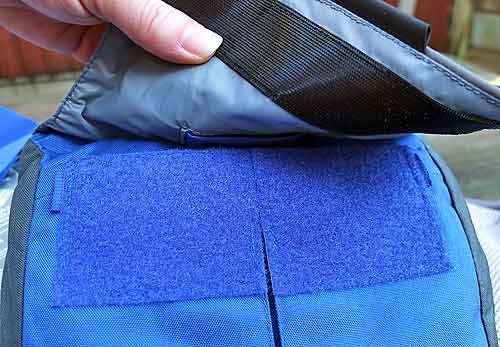
Fittings & Attachments
The quality of the fittings and attachments on the Palm Kaikoura, is very high.
The YKK zips look strong and they are plastic, so corrosion should not be an issue.
The main zip is chunky, with a good sized tab to make opening and closing easy with cold wet hands…
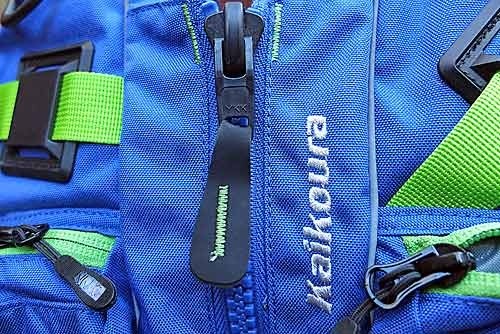
The teeth are made of plastic, so no corrosion issues…
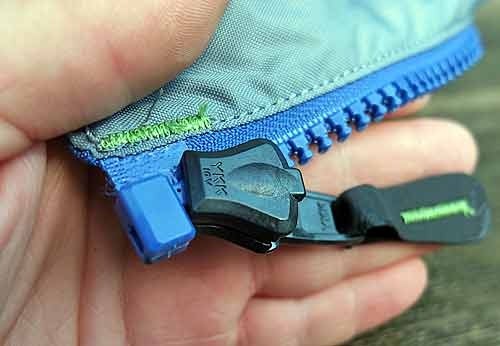
The other zips are smaller, but still of high quality, complete with tags
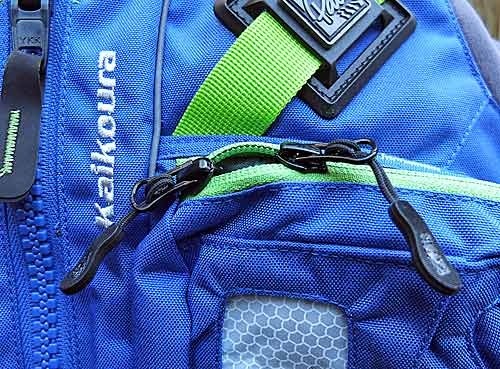
There are lots of D-rings attached to the PFD; they are always handy for attaching those easy-to-lose items.
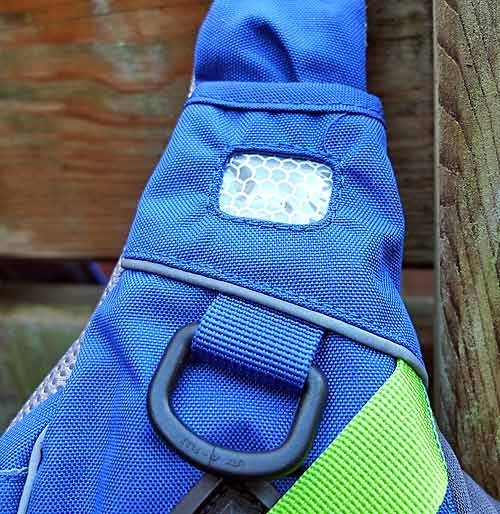
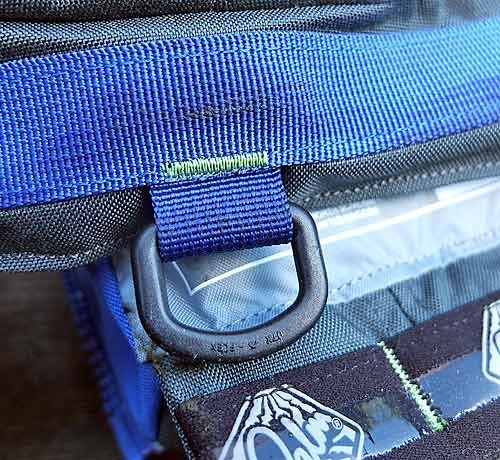
Many of the pockets also have small plastic clips, which are also useful for attaching equipment lanyards to.
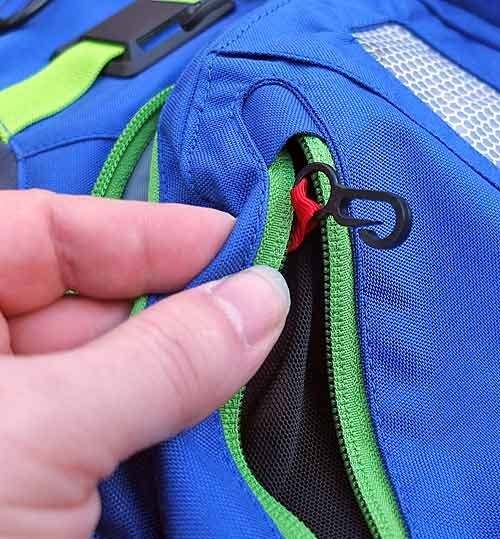
There’s even one on the inside of the rear pocket…
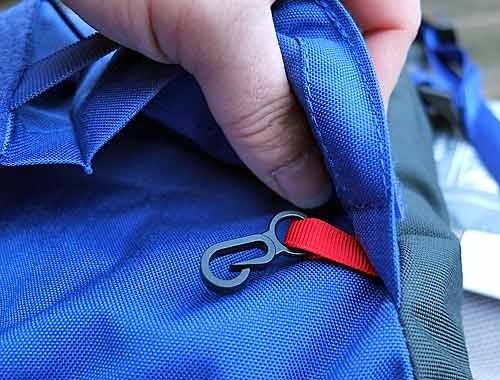
2 leashing points are present on the front of the PFD, they also have some webbing to increase their versatility even further. The one on the left side is angled, which makes it perfect for a PFD knife.
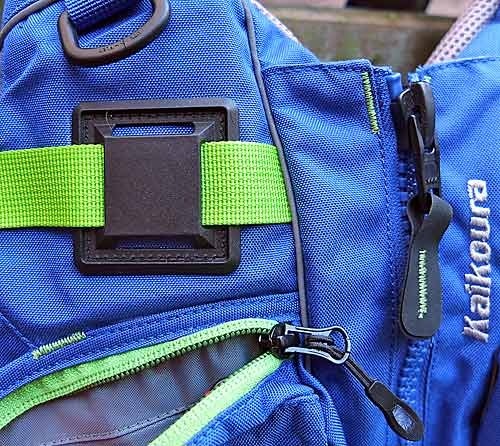
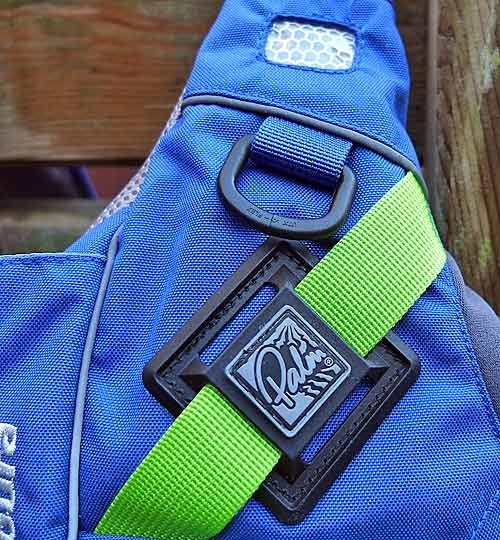

Attention to detail
The quality and attention to detail of this PFD can be seen everywhere, not always obvious, but when you take a close look, its clear that alot of thought has been put into this piece of equipment.
The stitching…
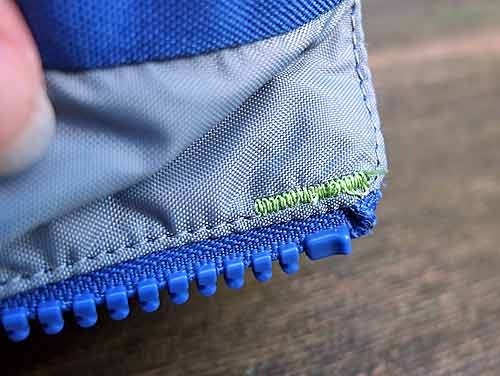
The reflective piping running along some of the seams, and in various windows both on the front and the back of the PFD…
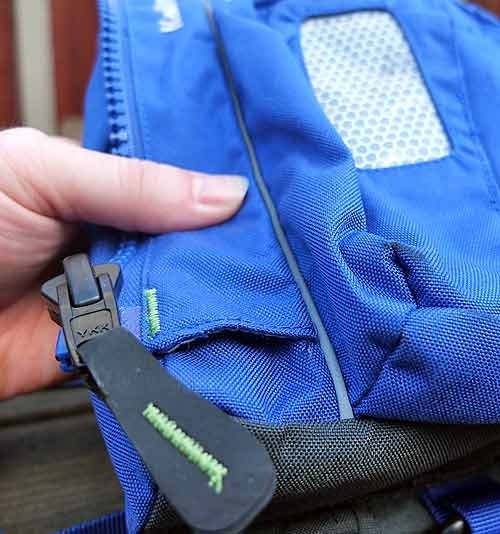
The mesh on the corners of the rear pocket to allow water to drain…
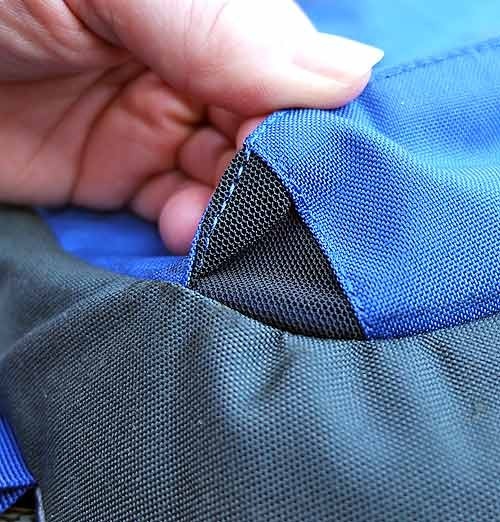
The “sticky” band in the middle of the waist strip of the PFD, to stop it riding up your cag/dry suit…
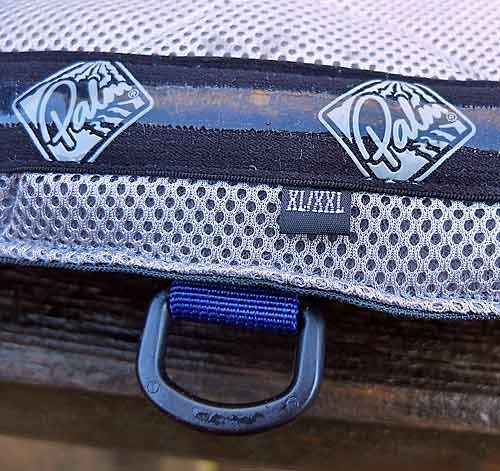
Even the hoods on the zips…
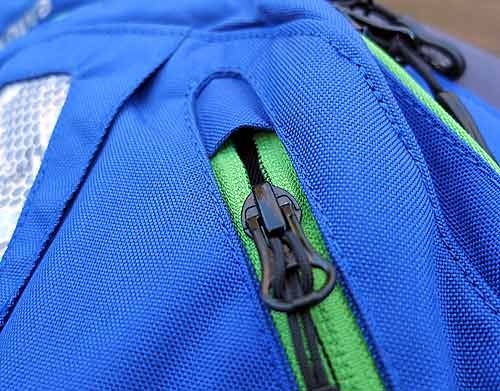
There is a place for everything, and everything has its place.
Conclusion
The fact that my old Palm Kaikoura is still functional after 5 years of saltwater kayak fishing, speaks volumes. The new 2013 design appears to be even better. In short, this PFD stood the test of time, it looks good, its functional, comfortable, and has lots of space for all of those items kayak fishermen love to use. Add to that, the build quality and the attention to detail, and its clear that a lot of thought has gone into the design and development of this garment. Its not cheap, but look after it, and it will look after you.
For more info and to locate dealers…
http://www.palmequipmenteurope.com/gear/kaikoura.html#sthash.9aARz5QM.dpuf
